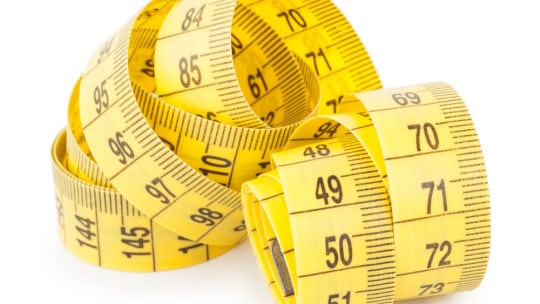
[Editor’s Note: Measurement continues to be something of an albatross for PR. Too many PR pros still consider measurement to be an afterthought. Others see it as an aspiration or a tool used to prove the ROI of PR.]

With the International Association for the Measurement and Evaluation of Communications’ (AMEC) Measurement Month just completed, we asked Weber Shandwick’s president of measurement and analytics Allyson Hugley to reflect on the state of PR measurement as well as how PR pros can change the mindset about the importance of measurement and using data to glean business insights as opposed to proving the worth of the PR function. In addition we asked her about the best methods to report data insights to the C-suite and the continuing use of AVEs.]
PR continues to play analytics catch-up with other communications disciplines. While there are leaders making significant strides in this area, PR as a whole has been slower to innovate, particularly in the data and data science space.
The industry continues to discuss data evolution conceptually—as a thought-leadership topic—rather than pushing aggressively for a real, industry-wide data transformation.
PR analytics discussions are shifting increasingly from Big Data to machine learning and AI, which is encouraging. But this shift makes salient the technical talent gap, which is a significant risk, particularly as it relates to future-proofing the industry.
Unless this skills imbalance is addressed en masse, the gap between conceptual understanding of the potential of analytics and the technical ability to realize that potential will only widen.
The Need for Better Data Access
Another challenge is the nature and quality of the data used – evaluate core aspects of PR. Earned media measures increasingly are disconnected from the realities of a media environment where audiences are more apt to consume news in their social feed than on a publisher’s news site.
The industry as a whole must push for broader availability and adoption of earned content-level and audience-behavioral data.
Adapting a Build Mindset for Data
For so long, measurement has been considered a performance tool—a way to prove PR success or failure—but really measurement and analytics are best used as planning tools to improve the work of communicators.
A mindset shift is required: less reporting and more consulting and opportunity identification. We should be actively using data and applying it to future work versus reporting on past activities.
Across the industry, we have to do a better job of communicating and then demonstrating the value of what I call a build mindset specific to data. Data is a critical ingredient for growth, but PR tends to not treat it as such.
Data builds relationships. It can also build business: agency to brand and brand to customer. Overcoming resistance to measurement and data means focusing on how to build more with data, rather than merely reporting it.
How to Build Data Into Your Efforts
We are finding increasingly that data is less valuable to our clients, particularly those in the C-suite, when presented as part of a program recap deliverable or scheduled reporting call.
We are working to infuse data and analytics into all of our client discussions, particularly those at the most senior levels. We are leveraging data and insights on an ongoing basis to inform the work and to build and reinforce relationships with clients.
When measurement and analytics are integrated into the work and are part of an organizational habit of bringing forward new thinking and opportunities to our senior clients, they see value in it. When measurement and analytics are disconnected from the core work, reported as a stand-alone research exercise and backward looking, it is less valuable.
Dashboards
In terms of dashboards, the best are, of course, clear and simple. Avoid building in too many elements, colors and chart types. While there have been many advances in data visualization, more sophisticated designs can be less clear to end users. Sometimes the best representations of data are the simple, standard pie and bar charts. They may not be sexy, but are clear and less taxing on audiences to interpret. Interpreting a dashboard should not require a stats degree.
Research shows that color accounts for 60% of acceptance or rejection of an object; select color schemes wisely.
Make sure to incorporate contextual elements. Incorporate trend charts to show performance over time. Consider factoring in performance versus competitors and performance against goal data or indicators with clear and concise language outlining key learnings and implications.
Qualitative Measurement
How to mix qualitative and quantitative metrics in a brand’s measurement effort is something I’m asked about often. We adhere to industry best practices when advising our clients on media measurement, which includes incorporating both quantitative and qualitative metrics.
However, because content analysis still largely is a manual process with significant resource implications, we know that incorporation of qualitative metrics is not possible for every assignment. Incorporating measurement and analytics into marketing plans from the onset helps in that regard; it’s easier to plan for the resource investment in advance than at the end of a campaign.
The Barcelona Principles
While I realize there are a lot of brands that continue to use AVEs, we advise our clients against using them. To help educate them and support our position, we reference materials that leading industry organizations have developed, such as The Barcelona Principles.
When working with clients that have used AVEs historically, we advise and work with them to phase out AVEs and incorporate valid metrics, often drawing on education and best-practice materials such as AMEC’s Integrated Evaluation Framework (IEF).
Unfortunately, until a similarly cost-effective measure tied to currency is developed, the complete eradication of AVEs will be difficult.
The Need to Break with Convention
In the measurement and analytics space, the PR industry needs to be bolder and more open to breaking with convention and experimenting with new types of data and data partners. Wearables and biometric data, as well as clickstream data, have the potential to dramatically change how and what we can measure. We must experiment more with these types of data sources and understand how best to apply them to public relations work—both as part of our program evaluation and our data storytelling. To achieve new insights and create more value through analytics, we must more aggressively pursue new and better inputs.
NOTE: This content appeared originally in PR News, October 10, 2017. For subscription information, please visit: https://www.prnewsonline.com/about/info
CONTACT: [email protected]
Takeaways
1. Shift your mindset about data: Use it less to report about past activities and more to assess and analyze current efforts.
2. Integrating measurement into your organizational habits will lead to new ideas and opportunities.
3. Dashboards can be extensive but avoid making them inaccessible to those without a degree in statistics.
